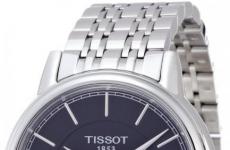Ensuring combat operations of the squad and platoon. Combat support
Comprehensive combat support consists in the preparation and implementation of measures aimed at maintaining high combat readiness, maintaining combat readiness, and creating favorable conditions for the troops to carry out a combat mission.
Perhaps none of the principles of combat has undergone such a complex evolution as the principle of support. Before comprehensive support was limited to reconnaissance, security, camouflage and rear service. Now it is a very branched system, including four main types of support - combat, moral-psychological, technical and rear , each of which is a complex structure. For example, combat support includes: reconnaissance, security, troop protection, electronic warfare, tactical camouflage, engineering support. Technical support of connections and military units subdivided into artillery-technical, tank-technical, auto-technical, engineering-technical, chemical-technical, technical support systems and means of communication, technical support for rear services. The logistic support consists of material, transport, medical, veterinary, commercial and household, apartment-operational and financial support. Such a complex system of all-round support is due to the nature of modern combined arms combat, its large scope, decisiveness, tension, maneuverability, and participation in it. various kinds weapons and military equipment.
The role and place of each of the types of support in the system of combat operations at various stages of military development were different. Some of them eventually went beyond supporting measures, becoming an inseparable part of the battle, as happened, for example, with air defense and anti-tank defense, securing joints and flanks, and antiamphibious defense.
Others, such as reconnaissance, electronic warfare, defense, security, and camouflage, having been enriched in the course of wars with new content, continue to be types of combat support, although their importance in achieving success in combat is steadily increasing. Some were independent for some time, and then began to relate to special types security. Such changes in the classification are due to a change in the role and importance of types of support in the course of preparation and conduct of combat operations.
The adoption of nuclear weapons after the Second World War, and later high-precision ones, the development and widespread introduction of electronics into the troops, automated systems, robotics has largely changed the functions of all types of software. In connection with the possibility of a surprise attack by the enemy, the importance of reconnaissance, electronic warfare, protection, and camouflage has sharply increased. At the same time, a number of types of collateral acquire new feature- ensuring the survivability of troops, and the protection of troops becomes one of the principles of combat. At the same time, it would be unlawful to divide supporting measures into main and secondary ones - they are all important, closely interconnected, complement each other and are aimed at achieving a common goal, which is to ensure that the troops do not lack anything. These measures must be carried out continuously both during preparation and during combat. Their organization and implementation is one of the main duties of commanders and staffs.
It is important to note such a trend in the development of types of security as the integration of some of its types, their transformation into a single complex systems. As the means of warfare develop and combat operations become more complex, new, higher requirements are imposed on all types of support, first of all, purposefulness, compliance with the battle plan, continuity, activity, secrecy, efficiency and complexity.
Colonel V.A. KISELEV, I.N. VOROBYOV
Combat support also has its own division into types: -intelligence; security; protection against weapons of mass destruction; EW (starting from the battalion); tactical disguise; chemical supply. Intelligence service - the most important species combat support. It is impossible to fight blindly. Reconnaissance is carried out in any situation in order to obtain data on the enemy and the terrain in the area of upcoming operations. The main requirements for intelligence: purposefulness; continuity; activity; efficiency; secrecy; the reliability of intelligence data; the accuracy of determining the coordinates of reconnaissance objects (targets). Exploration reports should be accurate, concise and clear. They usually indicate which enemy, when and where was discovered, the nature of his actions; where is the unit conducting reconnaissance; what the commander decided to do in the future. Reconnaissance must establish: the forces, position and intentions of the enemy, the location of his fire weapons and command posts; the nature of the engineering equipment of positions and the system of obstacles; gaps and open flanks in order of battle; areas of destruction, landslides, fires and floods, zones and degree of radioactive, contamination, possible directions for overcoming and bypassing them; natural obstacles, terrain patency, condition of roads, water sources, the nature of water barriers, the presence of crossings and fords. Security. Types of protection are: direct; watchdog; marching; combat. The general task of security is to prevent enemy reconnaissance from penetrating to protected subunits, to timely detect a ground enemy, warn protected subunits about him, and ensure time and favorable conditions for deployment and entry into battle. When deployed in the area waiting for landing (concentration area), subunits are guarded by guards. The area where the battalion is located is guarded by paired patrols, and guard posts are set up up to the detachment in threatened directions at a distance of up to 1500 m from the area where the battalion is located. Units in the squad-battalion link can be assigned to outposts. Defense against weapons of mass destruction. Protection against weapons of mass destruction in units marines organized in all conditions of the situation in full. It is carried out with the aim of: maximally weakening the impact of the enemy's nuclear, chemical and bacteriological (biological) weapons; maintaining the combat capability of units; ensuring the successful completion of their tasks. Protection against weapons of mass destruction includes: timely detection of enemy nuclear, chemical and bacteriological (biological) weapons; dispersal of units, use protective properties equipment and terrain, camouflage and change of areas of position; engineering equipment of the occupied areas, positions and preparation of routes for maneuver; warning of subunits about an immediate threat and the beginning of the use of weapons of mass destruction by the enemy, notification of radioactive, chemical, bacteriological (biological) contamination;
medical and veterinary measures; ensuring the safety of personnel during operations in areas of destruction, flooding, fires and contamination zones; identification and elimination of the consequences of the use of weapons of mass destruction by the enemy.
Electronic warfare. Electronic warfare in subunits is organized starting from the battalion and is carried out in order to: disorganize the control of the opposing enemy formations; reducing the effectiveness of the use of its weapons and technical reconnaissance equipment; ensuring the stable operation of the means of managing one's own forces and means. Electronic warfare is carried out in close combination with fire damage and the destruction of the main means of control of the unit and enemy weapons in accordance with the solution of reconnaissance and camouflage tasks. Components EW is the implementation of individual measures for: electronic suppression (REP) of the enemy; electronic protection (REZ) of their controls; countering the technical means of reconnaissance of the enemy (PD TSR). tactical disguise. The main purpose of tactical camouflage (TM) is to hide from the enemy the true position of our troops and impose on him a false idea of it and thereby mislead him and force him to make a decision appropriate to the situation. The disguise must be continuous, active, believable and convincing, and include a variety of activities. Tactical camouflage is carried out constantly and, as a rule, by one's own forces, i.e. without reinforcement by camouflage units engineering troops. Engineering support. Engineering support is organized and carried out in order to create subdivisions necessary conditions for: timely and covert advance, deployment and maneuver; increasing the protection of personnel and weapons and military equipment from all means of destruction; inflicting losses on the enemy and hindering his actions. In a battalion, engineering support includes: engineering reconnaissance of the enemy, terrain and objects; fortification equipment of strong points, positions and areas of location of units; implementation of measures for masking and protection from the WTO; installation of engineering barriers; making passages in barriers, destruction and arranging passages through obstacles; equipment and maintenance of crossings; extraction, purification of water and equipment of points of water supply. Chemical supply. The chemical support of combat operations of subunits is organized and carried out in order to create the necessary conditions for fulfilling the assigned tasks in an environment of radioactive, chemical, bacteriological (biological) contamination, masking troops and objects with aerosols (smoke), as well as for inflicting damage on the enemy with incendiary weapons. Chemical support in subdivisions includes: notch nuclear explosions; radiation, chemical reconnaissance; dosimetric and chemical control of the combat capability of the unit; special processing of units, decontamination, decontamination and disinfection of material assets, terrain objects; the use of aerosols and fumes; providing units with means of protection. The following: The content of individual measures of chemical support.
32. The concept of comprehensive and combat support. Types of combat support and their characteristics.
Combat support is a system of measures fixed in accordance with official instructions, requirements of military and combat regulations, which creates conditions for the successful completion of combat missions by troops in a combat zone. Along with logistic support, they are the main and integral factors in the full functioning of the troops.
Combat support consists of the following main types.
Reconnaissance - the collection of information about weapons, numbers, the system of combat guards, as well as about the hostilities planned by the enemy. The reconnaissance platoon is the regular subdivisions carrying out reconnaissance among the troops.
Protection against weapons of mass destruction - a set of measures to protect personnel from the effects of nuclear, chemical and biological weapons. The protection of personnel in the initial stages is carried out by the forces of the line units themselves.
Camouflage is a set of measures to hide from the enemy the true location of their units, personnel and military equipment, to preserve their combat capability and to ensure surprise actions. Implemented on your own line divisions.
Engineering support - a set of measures aimed at successfully overcoming obstacles to the offensive of own troops, measures to complicate the advance of the advancing enemy, measures to protect personnel and military equipment from the damaging effects of enemy fire weapons.
Protection - a set of measures to prevent a sudden attack by the enemy on their own troops. Depending on the nature of the combat mission performed by the subunits, guarding can be marching, guard, combat, and direct. The main elements of any type of protection is the organization of guard duty and patrolling the area. It is carried out by own forces of linear divisions.
34. The degree of readiness of forces and means of the territorial bodies of the Federal Penitentiary Service of Russia in case of emergency. Measures envisaged for the transfer of institutions and bodies to the indicated degrees.
Measures to ensure the collection and bringing to a degree of readiness of command and control bodies and operational formation groups for actions in case of emergency are:
the establishment of warning signals for the collection of personnel involved in actions during an emergency;
creation of a warning system for the personnel involved for these purposes.
The warning signals established by this Manual are uniform.
The notification system is implemented through a plan for notification and collection of ATS personnel.
To reduce the time for alerting forces and means, readiness levels No. 2 and No. 1 are established.
When bringing to the degree of readiness No. 2: an alert and collection of personnel is carried out, which is transferred to the barracks; combat and special equipment, vehicles are brought to the construction site (in winter time remain in parking lots, in storage facilities until the landing of personnel); ammunition is not handed out; tasks are not assigned.
The time for bringing personnel to readiness level No. 2 is 1 hour 30 minutes.
When entering readiness level No. 1, the personnel are equipped, weapons and ammunition are issued to them, the personnel are boarded on vehicles, and tasks are assigned to groups. Ammunition is handed out or loaded onto vehicles.
The degree of readiness No. 1 can be entered, bypassing the degree of readiness No. 2. The term for bringing to the degree of readiness No. 1 from the degree of readiness No. 2 is 30 minutes, bypassing the degree of readiness No. 2 - 1 hour 30 minutes.
35. What does the grouping of forces and means of the territorial body of the Federal Penitentiary Service of Russia include when conducting a special operation to search for and detain armed and other especially dangerous criminals? Composition, number and equipment of groups.
An operation to search for and detain armed and other especially dangerous criminals is a complex of interrelated and coordinated in place and time operational-search, security measures and military operations carried out by internal affairs bodies, together with interacting forces in order to establish the location, capture and neutralize or destroy armed criminals.
The main social goal of operations to search for and detain armed and other especially dangerous criminals is to protect the life and health of citizens and keep the criminal alive in order to ensure that they are brought to justice.
In all cases, it is necessary to create such a grouping of forces and means in terms of composition and capabilities that would really correspond to the expected scope of tasks for the search and detention of armed and other especially dangerous criminals, which will ultimately ensure success in a special operation. The following grouping of forces and means can be created:
blocking group;
Search group;
capture group;
Cover group;
Information collection and analysis group;
Logistics group;
In all cases, a reserve is created.
The calculation of the number is made for each zone based on the number of outfits planned for deployment and the following standards:
Pursuit group (8 or more people);
Observation post (3-5 people);
Search group (6-15 people)
The density of the combat order of the search groups depends on the nature of the terrain, the number of criminals, the availability of their own forces and means, the preparedness of the personnel, the time of year and day. The size of the capture group is determined at the rate of 3 people per arrest of one criminal.
When detaining criminals in settlements, cordon and evacuation groups are created.
36. What does the grouping of forces and means of the territorial body of the Federal Penitentiary Service of Russia include when conducting a special operation to suppress and eliminate mass riots in places of deprivation of liberty? Composition, number and equipment of groups.
A special operation may be carried out by internal affairs bodies together with military units. internal troops for:
detention of especially dangerous and armed criminals;
Suppression of riots in settlements;
Release of hostages;
Seizures of weapons, ammunition, military equipment, explosives and other items of military property.
A special operation is a complex of operational, security and other measures carried out in a limited area within a specified period of time according to a common plan and under a single leadership.
The purpose of the special operation is to restore the disturbed law and order, detain active participants in mass riots, detain criminals, and ensure stabilization of the situation in the area of the operation.
The main governing body in a special operation is the operational headquarters. A military task force is created at the operational headquarters to direct the actions of the troops.
To conduct a special operation, a grouping of forces and means is created, which may consist of groups: cordon, blocking, reconnaissance, negotiating, capturing, covering, escorting, medical support, logistics and logistics.
In accordance with the plan, the preparation of subdivisions, management bodies, the creation, storage and renewal of stocks of material resources are being carried out.
With the receipt of a task for action in a special operation, direct training of the unit is carried out. It includes: organizing the actions of troops in a special operation; preparation of the unit for the fulfillment of the assigned tasks; practical work of the unit commander and other activities.
At the initial stage of riots, individual sections (objects) may be cordoned off.
The dispersal group is designed to cut off rioters from objects in respect of which illegal actions are being committed, to expel them from the area where special operations are being carried out. operations and subsequent dispersal into small groups. The dispersal group includes most of the forces and means.
As part of the dispersal group, military and special equipment can operate.
The composition of the seizure group, in addition to employees of the internal affairs bodies, may include personnel of special forces.
The security group consists of guards that take under guard objects in respect of which unlawful actions may be committed by rioters.
The escort group receives the detained organizers and active participants in the riots from the removal groups and accompanies them to the filtration point.
Fire groups are created, as a rule, from snipers of divisions and are intended to suppress attempts by criminals to use weapons against personnel participating in a special operation.
The reserve is designed to perform suddenly arising tasks. Personnel in a special operation act in protective equipment on foot. The armament of the personnel is determined by the head of the operation. In all cases, the security group, escort group, fire group, as well as part of the reserve and officers are armed.
37. What does the grouping of forces and means of the territorial body of the Federal Penitentiary Service of Russia include during a special operation to free persons illegally held as hostages? Composition, number and equipment of groups.
Many factors influence the conduct of a special operation, primarily:
Location of the operation House, administrative building, transport
Means, special shelters;
The identity of the offender - gender, age, mental state, armament;
The number of criminals and hostages;
The demands put forward by the criminals are acceptable or not;
The identity and condition of the hostages;
the actor of time and the amount of information about the whereabouts of the hostage and the offender;
Time of action (day and night), weather conditions;
Preparedness of personnel for actions in the current situation, their sufficiency, availability of special equipment, weapons;
The presence of a plan for the operation and others.
The organization and conduct of a special operation to free the hostages is carried out by the operational headquarters on a general basis in accordance with the procedure for conducting such operations.
One of critical tasks- Establishing contact with criminals and negotiating with them. A representative of law enforcement agencies or relatives close to the victim can act as an intermediary in negotiations with criminals.
38. What does the grouping of forces and means of the territorial body of the Federal Penitentiary Service of Russia include when conducting a special operation to repel an armed attack on the objects of the penitentiary system? Composition, number and equipment of groups.
V without fail the following groups are created: 1-repelling an attack, 2-opera-investigative, 3-reserve. By decision of the head of the special operation, if necessary, the following are created: 1-blocking, 2-search environments, 3-capture (assault), 4-one support, 5-security.
Plan:
- Introduction
- 1 Intelligence
- 2 Defense against weapons of mass destruction
- 3 Disguise
- 4 Engineering support
- 5 Chemical supply
- 6 Security
- 7 Communication
- 8
Additional views Combat Support for military branches
- 8.1 Airborne Support
- 8.2 Topogeodetic Combat Support
Introduction
Combat Support is a system of measures fixed in accordance with official instructions, the requirements of the Military Regulations and Combat Regulations, which creates conditions for the successful completion of combat missions by troops in the combat zone. As well as Logistics Support are the main and integral factors for the full functioning of the troops.8 Combat Support consists of the following main types.
1. Intelligence
Gathering information about the deployment, weapons, numbers, engineering preparation of positions, the combat security system, the enemy’s communications system, as well as the enemy’s planned hostilities. The regular units carrying out reconnaissance in the troops are reconnaissance platoon v battalion, reconnaissance company v shelf/brigade, reconnaissance battalion v divisions, reconnaissance regiment/brigade as part of armies/districts. Main article - Tactical Intelligence
2. Protection against weapons of mass destruction
Abbreviated ZOMP - a set of measures to protect personnel from the effects of nuclear, chemical and bacteriological (biological) weapons. The protection of personnel in the initial stages is carried out by the forces of the line units themselves. The regular units in the troops that carry out a comprehensive ZOMP are, are chemical protection platoon as part of a shelf, chemical protection company as part of brigades, chemical protection battalion as part of divisions, regiment/brigade Chemical Protection as part of armies/districts. 2
3. Disguise
A set of measures to hide from the enemy the true location of their units, personnel and military equipment, maintain their combat capability and ensure surprise actions. It is carried out by own forces of linear divisions.
4. Engineering support
A set of measures aimed at successfully overcoming obstacles to the offensive of own troops (building crossings, installing bridges, clearing minefields, making passages in the obstacles set by the enemy, etc.), measures to complicate the advance of the advancing enemy (laying minefields, installing anti-tank obstacles , installation of anti-personnel barriers, etc.), measures to protect personnel and military equipment from the damaging effects of enemy fire weapons (arrangement of a system of trenches and trenches, caponiers for military equipment, dugouts, arrangement of firing points, etc.). The regular units in the troops that carry out integrated engineering support are, are engineering platoon v shelf, engineering sapper company v brigade, engineer battalion v divisions, engineering sapper regiment/brigade as part of armies/districts.4
5. Chemical supply
A set of measures to create the necessary conditions for units to perform their tasks in an environment of radioactive, chemical and bacteriological (biological) contamination, as well as to mask their actions with smoke and aerosols. The measures consist of radiation and chemical reconnaissance, timely and skillful use of personal and collective protective equipment, dosimetric monitoring, special treatment for degassing and decontamination, as well as the use of masking fumes and aerosols. The regular units in the troops that carry out chemical support are chemical protection platoon as part of a shelf, chemical protection company as part of brigades/divisions, chemical protection battalion as part of divisions/corps, regiment/brigade Chemical Protection as part of armies/districts. Also, the regular chemical protection units are entrusted with the function of applying flamethrower and incendiary means in combat conditions, which essentially equates them to linear divisions(the concept of line division). 5
6. Security
A set of measures to prevent a sudden attack by the enemy on their own troops, as well as to prevent reconnaissance and sabotage units of the enemy in the places of deployment of units of their own troops. Depending on the nature of the combat mission performed by the subunits, guarding can be marching, guard, combat, and direct. The main elements of any type of protection is the organization of guard duty and patrolling the area. Carried out by own forces of line divisions, companies and battalions protection and commandant units.6
7. Communication
A set of measures to organize communication between subunits and commanders at all levels, aimed at the successful completion of combat missions, reliable command and control of troops and effective interaction between subunits. The regular units in the troops providing communications are communications platoon v battalion, communications company shelf/brigade, communications battalion v divisions, regiment/communications brigade as part of armies/districts. 7
8. Additional types of Combat Support for military branches
8.1. Airborne Support
A set of measures to ensure airborne troops, special forces, parachute reconnaissance units ground forces technical means for parachute landing - human parachute systems, parachute systems for airborne vehicles and armored vehicles, drop containers and platforms for weapons, ammunition and equipment, allowing the airborne troops to solve the tasks set combat missions. Regular divisions carrying out a comprehensive airborne support are paratrooper platoon for separate battalion, paratrooper company for regiment/brigades, airborne support battalion for airborne division. 8
8.2. Topogeodetic Combat Support
A set of measures for the preparation and communication to the troops of topographic and geodetic data necessary for studying and assessing the terrain, orienting on it, the effective use of weapons and military equipment and command and control. At its core, topographic and geodetic combat support refers to common tasks solved by intelligence, but has a broader definition and application to artillery troops. Precisely for artillery level topographic and geodetic support has a decisive role in the successful fulfillment of the assigned combat missions. Topographic and geodetic support of the battle the troops produce aviation reconnaissance units that carry out aerial photography, full-time intelligence units ground forces and divisions topographic service at headquarters from the level divisions and higher (in artillery it is topographic battery as part of artillery brigade). 9 10






